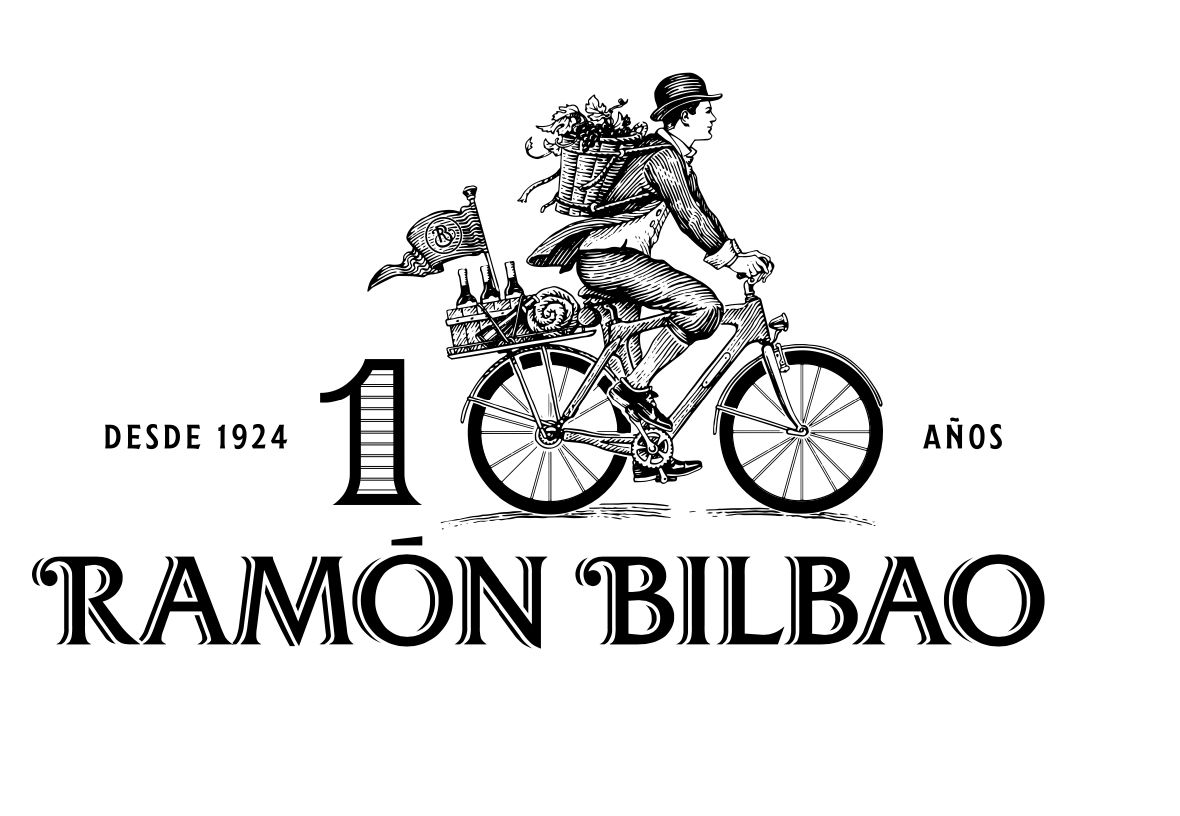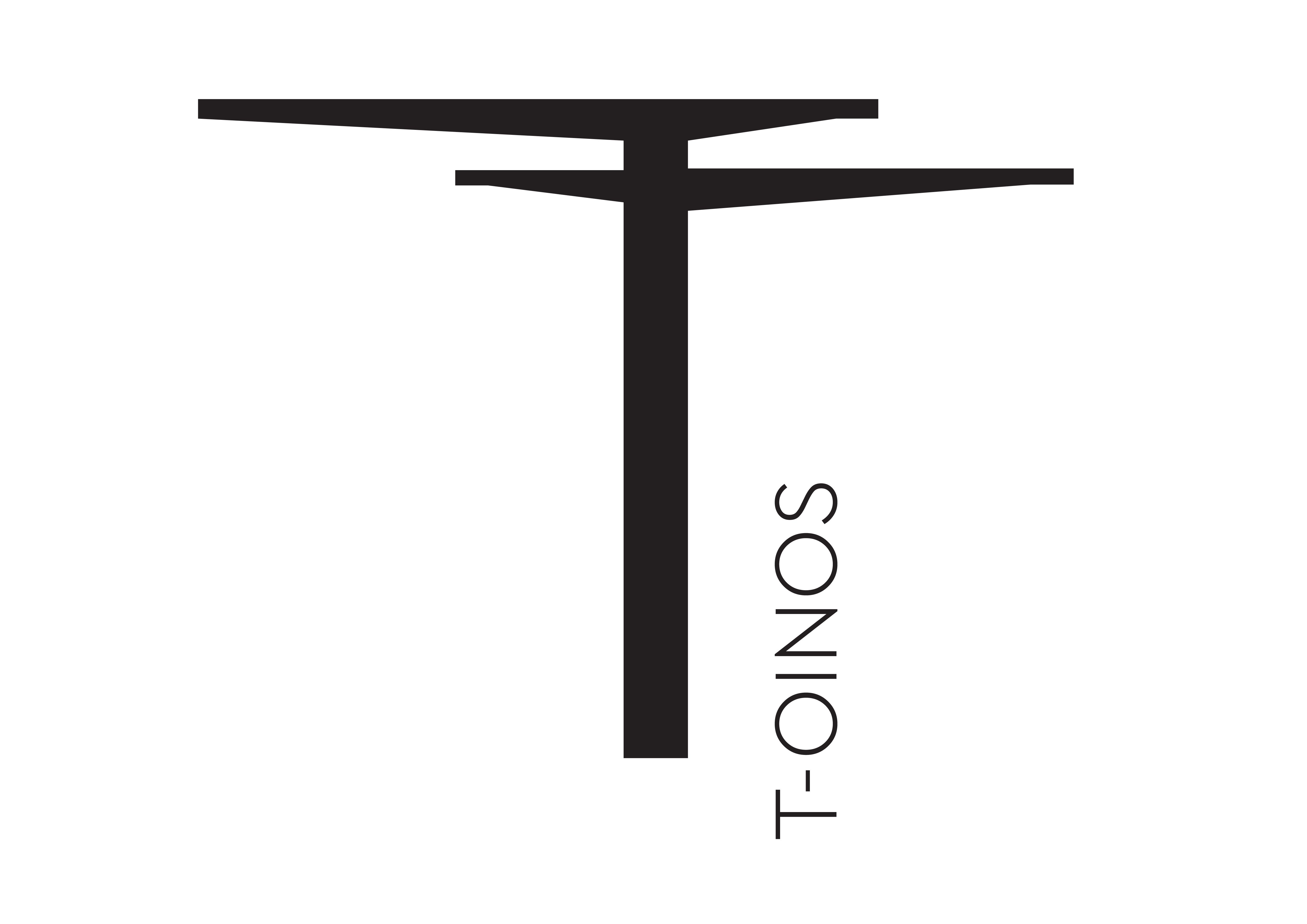It was made clear in no uncertain terms that the ambition of Quintus is to become the next Premier Grand Cru of Saint-Emilion.
An entertaining clash of cultures
There is something entirely perverse about hiring one of the greatest exponents of modern British cooking to devise a tasting lunch with a French theme. It was a triumph, of course – you would expect nothing less of Isaac McHale – but throughout Thursday’s lunch to celebrate the first six vintages of Château Quintus there was a thrilling clash of cultures played throughout.
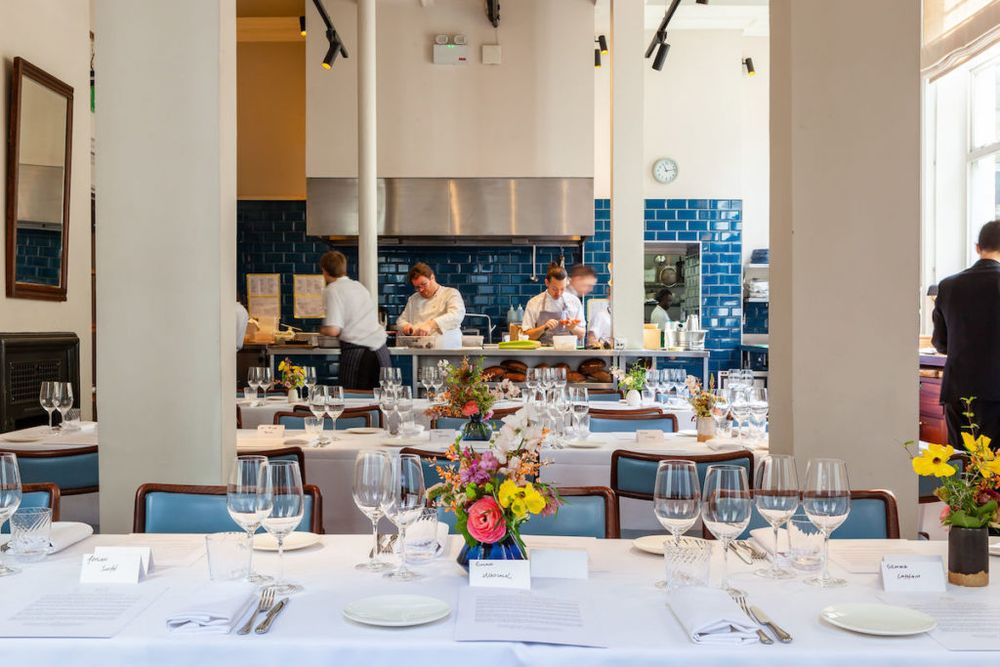
Quintus had hired the entire restaurant. The Clove Club, London, April 18, 2019
Here is a wine estate that, since 2011, has been positioned by Domaine Clarence Dillon as ‘the next big thing’ of the Right Bank, choosing The Clove Club to host its first major London retrospective. Set in deepest Shoreditch, Clove Club is the type of joint where a set of highly visible tattoos seems to be a job-requirement.
It is also the first ‘grand cru’ tasting I have been to where the soundtrack is ska music… that is, until one of the older and very British wine critics promptly told the girl with ink-covered forearms to turn it off.
“I think there should be a consensus of opinion as to what type of music is played,” she shrilled. I would hazard a guess that this was the first time this has happened in what is generally regarded as one of the best if not the best restaurants in Britain.
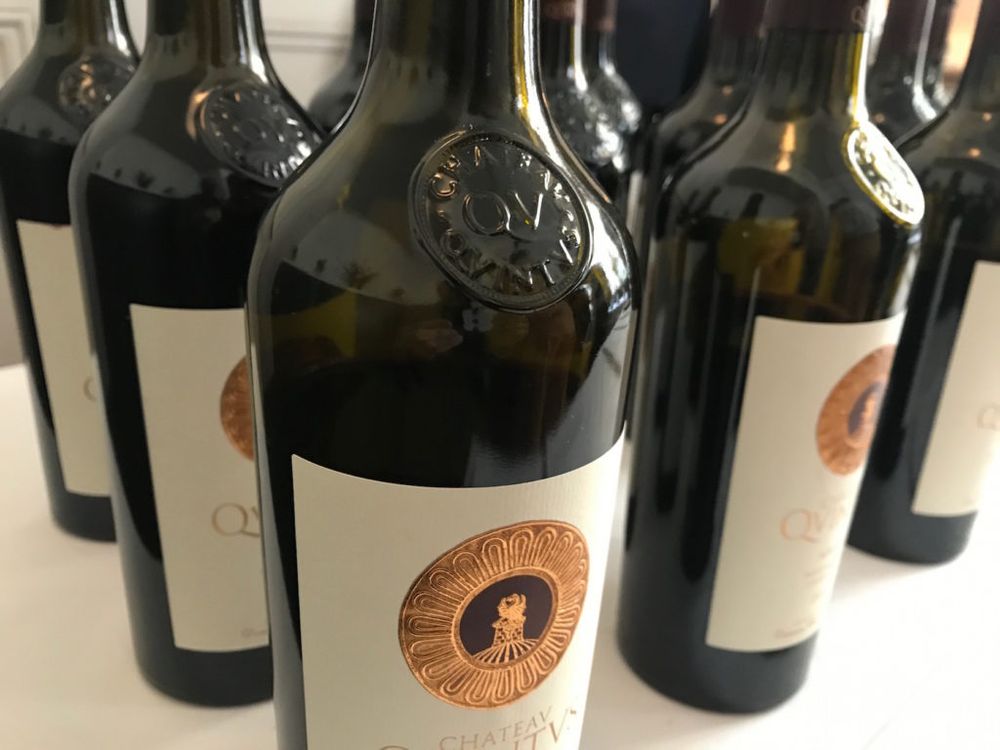
The Quintus bottles are based on the design of old bottles of Château Haut-Brion
Fast-forward to the pre-dinner speech by Clarence Dillon’s deputy MD, Jean-Philippe Delmas who was giving a lengthy, nay, very-lengthy and very detailed introduction to the estate and background to the group’s opening of its own restaurant in Paris when, as he was about to continue, Steven Spurrier clapped loudly as you do when a wedding speech has concluded, everyone in the room following.
“Yes, I know Steven,” Delmas laughed, “I shall stop and let the lunch be served.”
Spurrier had that lovely look of someone who hadn’t meant to be impolite (he is the world’s most polite person) and yet who was rather looking forward to getting stuck in to the starter.
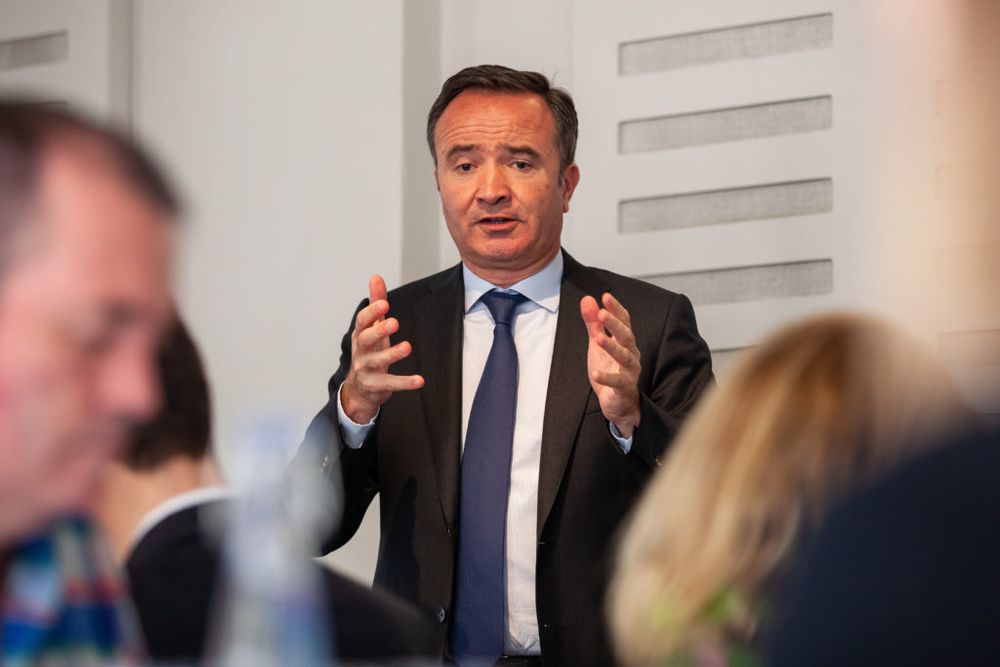
“And another thing…” Clarence Dillon’s deputy MD, Jean-Philippe Delmas
A feast of grand cru standing
Since opening its permanent home at Shoreditch Town Hall in 2013, The Clove Club has earned itself a place as one of the best restaurants in the world. Chef Isaac McHale, one of three partners who first started it as a pop-up supper club, uses seasonal, often overlooked, ingredients with the artistry on the plate contrasting with the laid-back, almost stark surroundings.
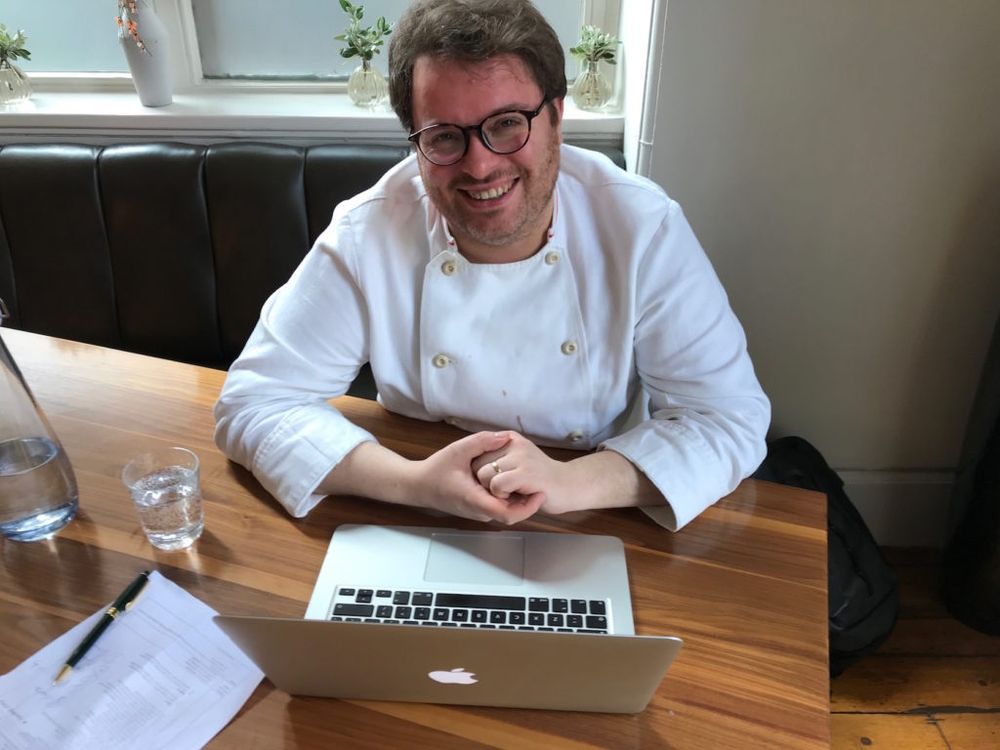
Clove Club chef Isaac McHale after the lunch
To show off the wines of Quintus (one white, three reds and an amberwine), McHale devised a five-course tasting menu that had one foot in Bordeaux and one foot in Shoreditch. Being a fan of Bordeaux, and with a glass close at hand throughout lunch serving, McHale says he enjoyed the task – going for dishes that gave a passing nod to the cuisine of the Bordelais.
Some of McHale’s signature dishes were served in the bar with glasses of chilled NV Bollinger – trout nori, haggis doughnuts and fried chicken with pine salt – but the Quintus pairing proper began with the starter of Raw Orkney Scallop, Hazelnut, Clementine & Perigord Truffle that was matched with Clarendelle Blanc 2016, a blend of Sauvignon Blanc, Semillon and Moscatelle.
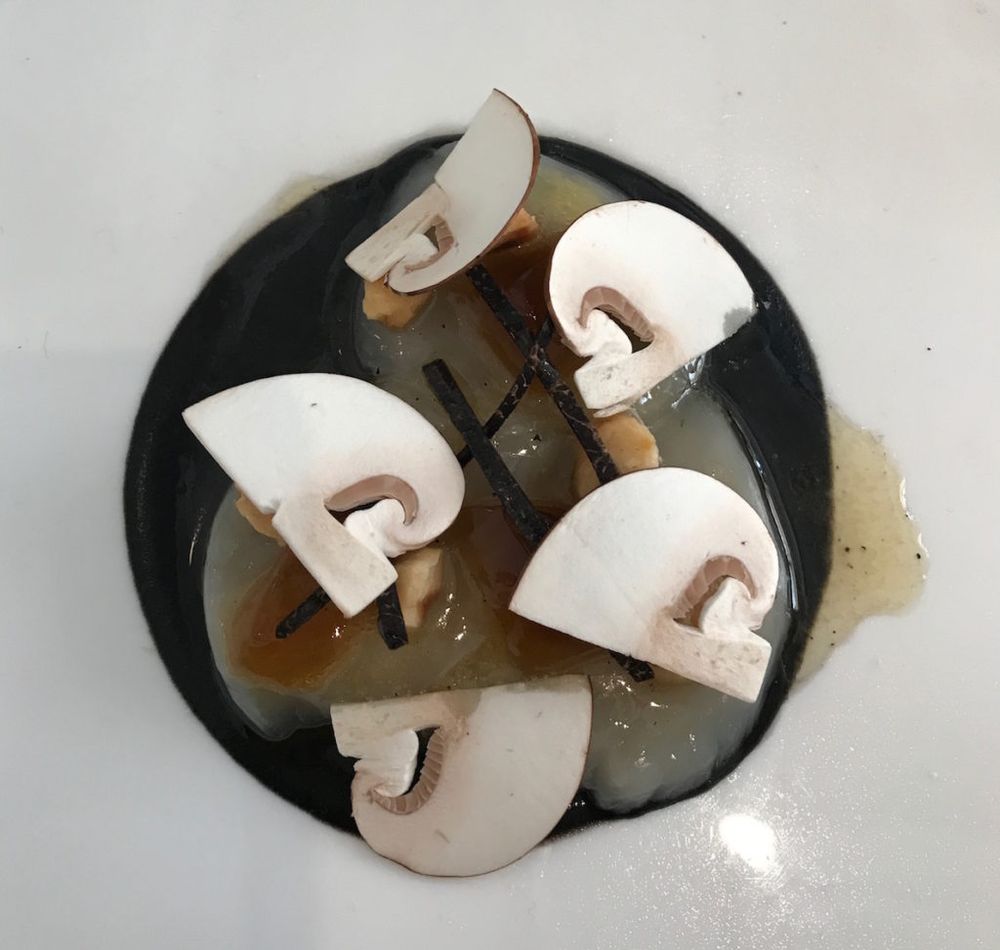
This picture really doesn’t do the dish justice
The wine played second fiddle to the dish which was spectacular, all of the ingredients resting on a base of squid ink mixed with truffle reduction. Clarendelle is one of the five estates owned by Domaine Clarence Dillon and makes totally drinkable, affordable more entry level wines.
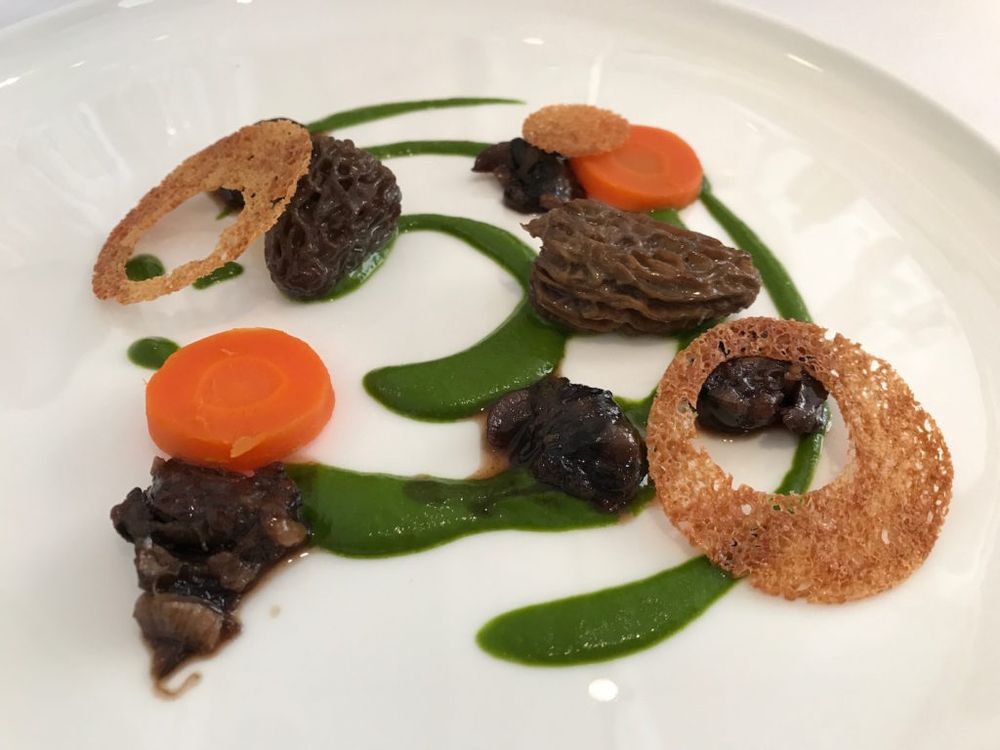
Second course was Morels stuffed with Wood Pigeon Sausage, Snails and Wild Garlic which was outrageously good and managed to capture the essence of a British Spring. The wine paired with this was Le Dragon de Quintus 2011, the first vintage of the estate’s second wine and drinking perfectly – great balance with just enough age to offset the woodland elements of the dish.
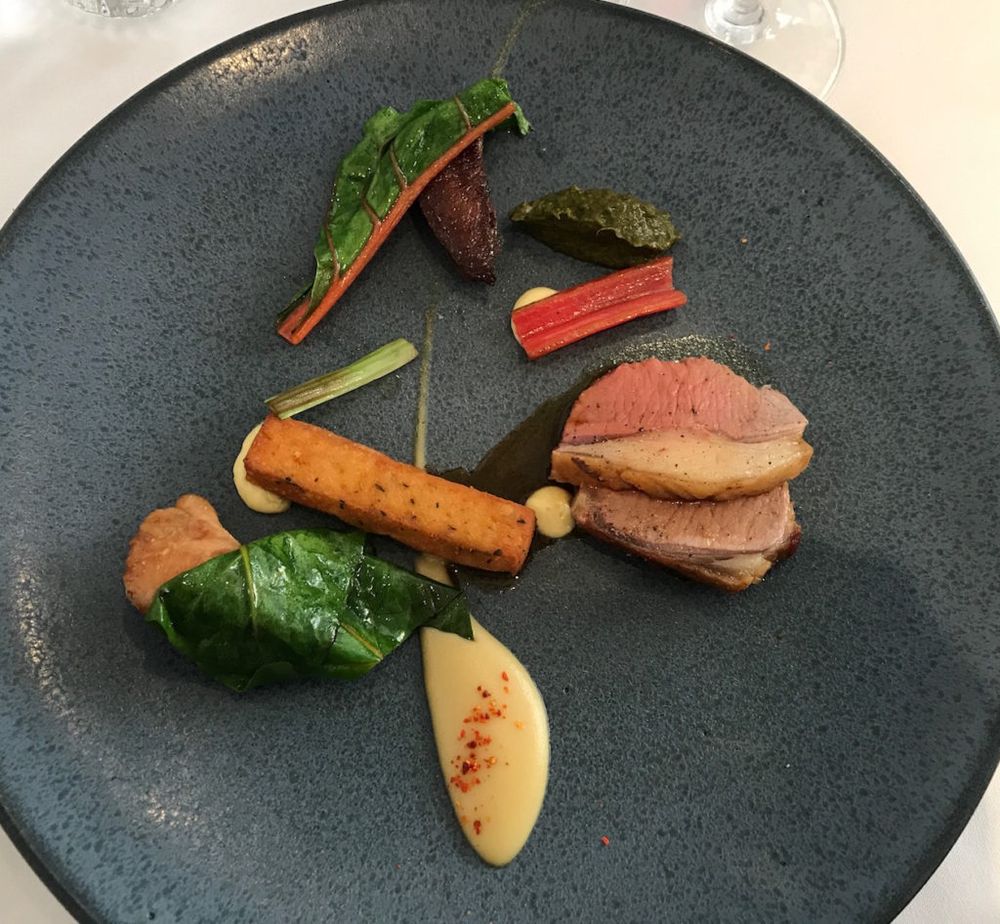
Next was Welsh Speckie Face Lamb, Chickpea, Bagna Cauda and Swiss Chard matched with Quintus 2012. The dish was all about the depth of flavour in the lamb and the deep, concentrated fruit of the wine was a great match, the dryness of the finish, tying together the various elements on the plate. This was only Quintus’s second vintage – it is drinking well now – rounded, classic and well balanced.
One of my favourite wines of the day Quintus 2015 was served with a selection of British farmhouse cheeses and crackers. Personally I always serve white wine with cheese and for me this course was all about the outstanding wine – clearly a step up from preceeding vintages and almost not needing any food – and crackers? Sacre bleu!
The pudding: Loquat Sorbet, Loquat Kernel Cream and Puffed Amaranth had many reaching for Google so they could pretend they knew what a Loquat is. Not much fresh fruit around in April, so it was an inspired choice by McHale. The Clarendelle Amberwine 2015 is Clarence Dillon’s nod to Monbazillac and, like the earlier white, was perfectly drinkable if unremarkable.
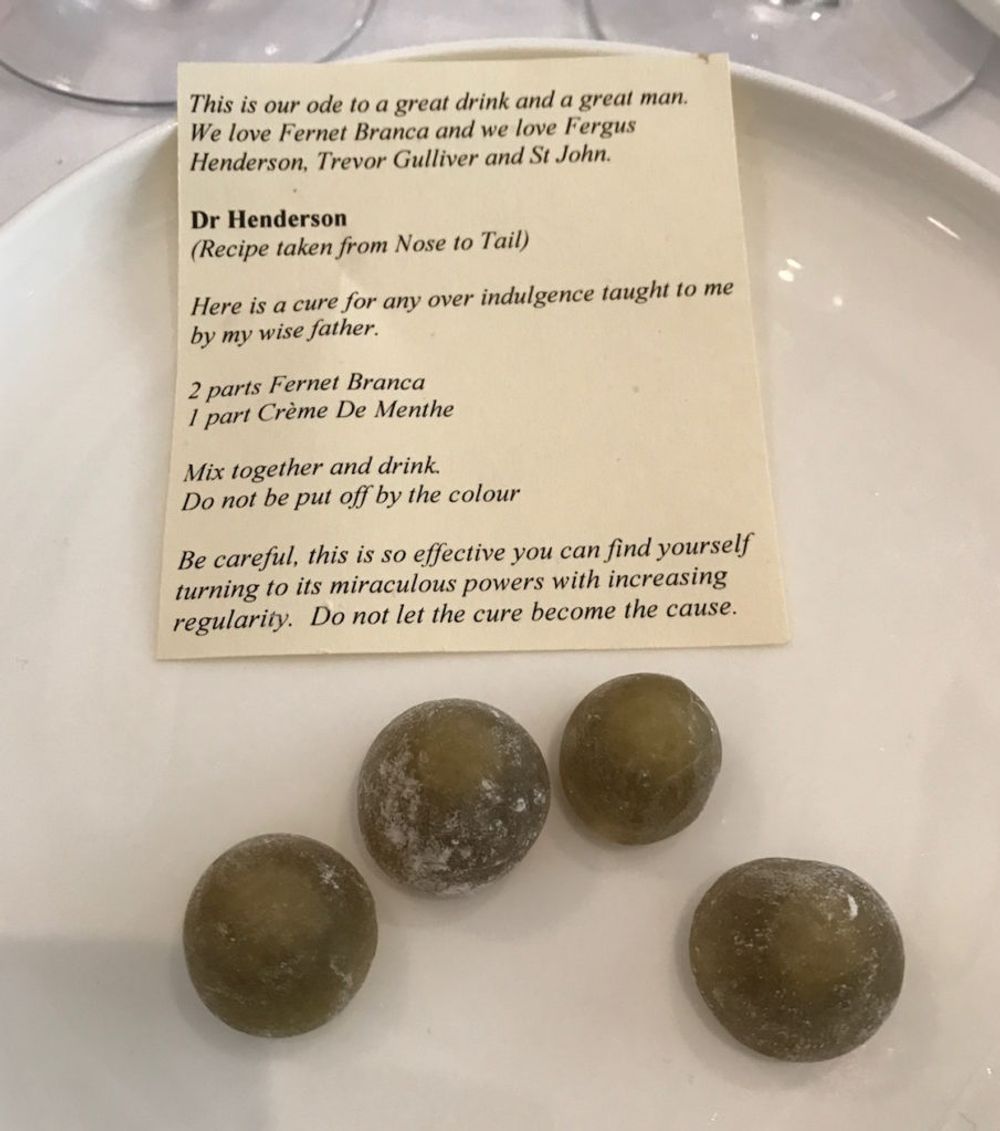
With petits fours we were served bon bons that contained Dr Henderson, Ferguson Henderson’s cure for over-indulgence – made up of two parts Fernet Branca to one part Crème De Menthe.
And on to the wines themselves
Château Quintus has had a long and chequered history. Prior to Clarence Dillon buying the estate in 2011 it was called Château Tertre Daugay and was 15 hectares, to which the 13 hectares of neighbouring Château L’Arrosee was added two years later.
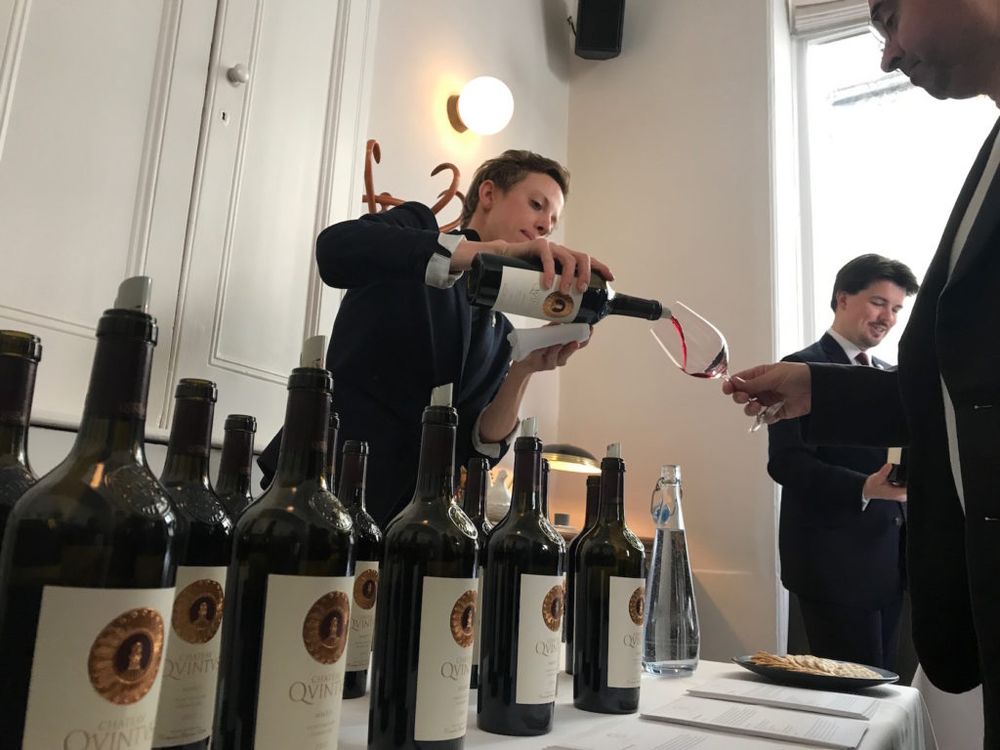
Tasting the wines first without food
The name Quintus comes from the Roman tradition of naming your fifth child Quintus which, given that the Romans first planted vines in Saint-Emilion and that Quitus is Clarence Dillon’s fifth wine estate is all very appropriate.
Quintus has three wines: the eponymous grand vin Quintus, the second wine Le Dragon de Quintus and the third Saint-Emilion de Quintus which was started in 2014 and is a blend of Merlot, Cabernet Franc and Cabernet Sauvignon. The other two wines are Merlot/ Cabernet Franc although Dragon had 1% of Cab Sauv in 2015 and 13% in the tricky 2013 vintage.
Prior to lunch we tasted six vintages of Quintus, five of Dragon and three of Saint-Emilion. The blends of the wines change vintage by vintage but overall the difference between the grand cru and Dragon are purely terroir – Quintus comes from the top of the hill, Dragon from the bottom.
The winemaking is the same and, conducted by the oenologists that oversee Haut-Brion, there is clearly a pedigree and knowhow evident in the glass. Quintus is very similar to Dragon, just with more finesse, concentration and seemingly higher levels of acidity. The wines also were consistent with the way they reflected the vintages – the 2015s showed the strongest, followed by the 2016s and then the older vintages, particularly the Quintus 2011, given that it is just entering its drinking window proper.
The 2014s were lighter, more elegant and more red fruit-driven than black. But all of the wines on show were incredibly approachable given their youth.
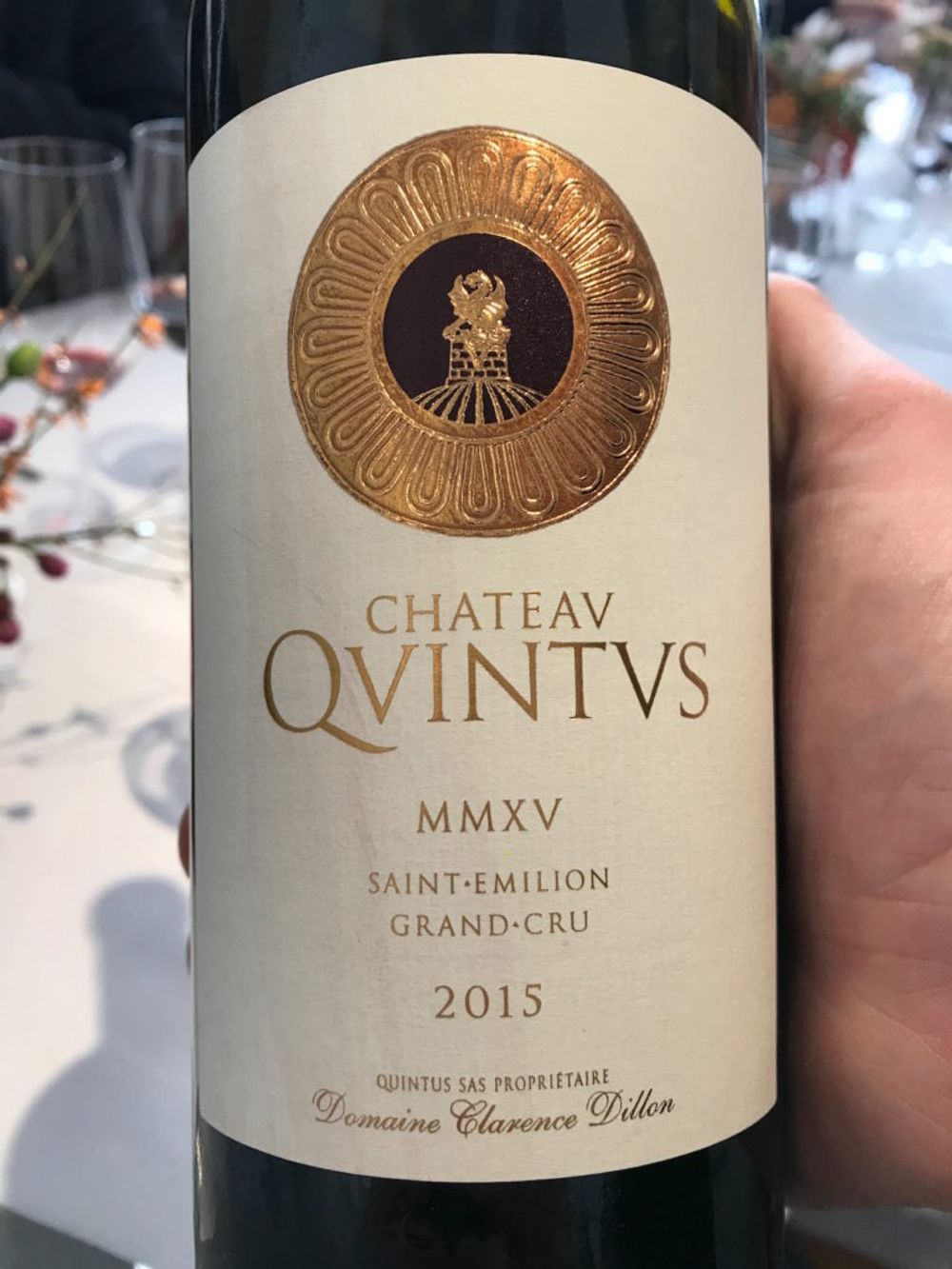
My picks of the tasting were:
Saint-Emilion de Quintus 2015
The younger vintages of both the third and second wines were drinking well, reflecting the changes both in the vineyard and cellar that the Clarence Dillon team have employed – increased density, greater selection, reduced use of new wood. Compared to the 2016 this was less vivid purple, it felt more settled and evolved. The wine is clearly young but the tannins were supple and approachable and had lots of juicy red and black fruit.
Le Dragon de Quintus 2016
All of the vintages tasted of the second wine 2011-2016 were so drinkable but the more recent years clearly see the estate going in an upward trajectory. The 2016 stood out – so fresh, with young, attractive fruit and a crisp, citrus peel acidity and dry, river stone finish. Yummy.
Quintus 2011
First ever vintage of Quintus, a 50/50 Merlot/ Cabernet Franc blend. Quite a floral nose, with a sweetness that reminded me of confectionery tobacco, plenty of black fruits and a dusting of cocoa. Fresh with a great balance that really makes you want to drink more.
Quintus 2015
Ripe, concentrated nose. On the palate this is voluptuous and generous, a delicious range of red and black, fruity flavours; there are young, supple tannins, a roundness, almost creaminess to the fullness of the mouthfeel; great balance and a pleasingly dry twist on the finish. A blend of Merlot (76%) and Cabernet Franc (24%).




























